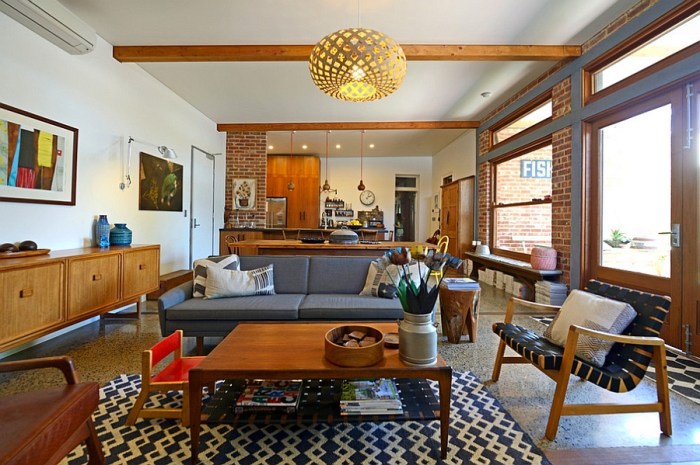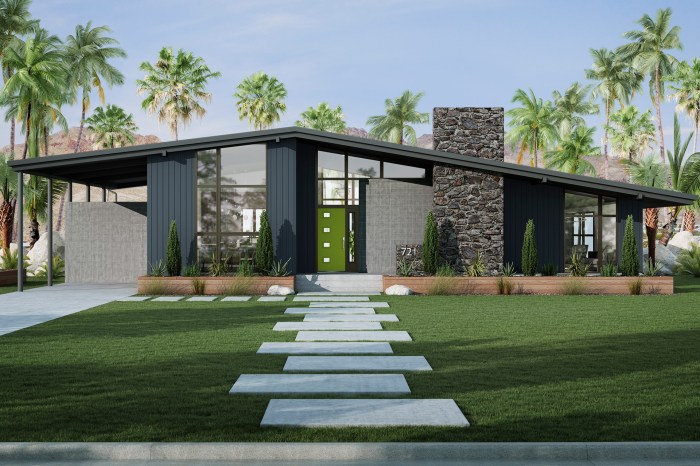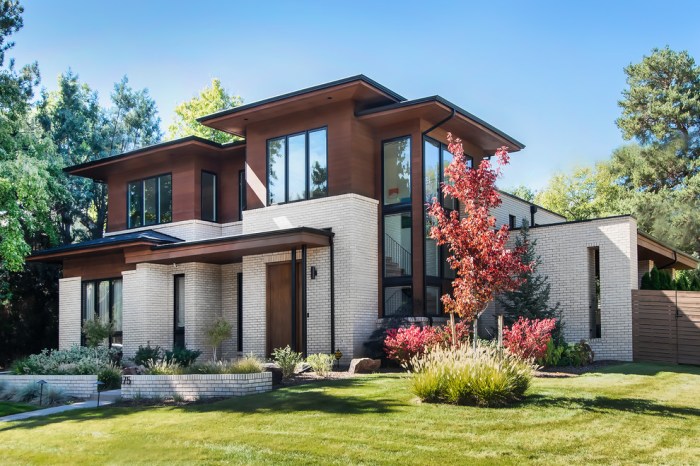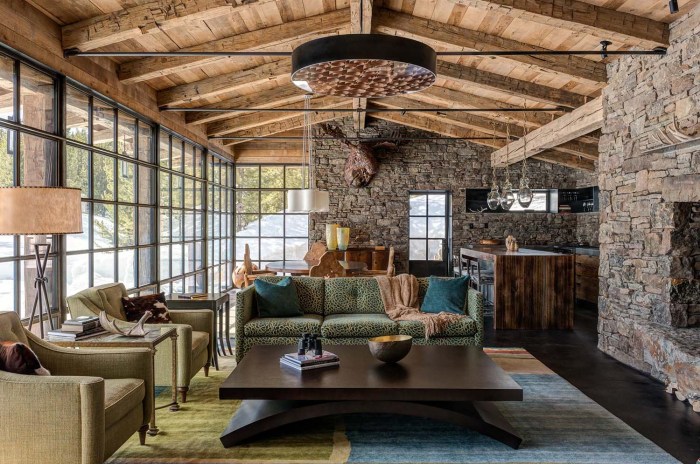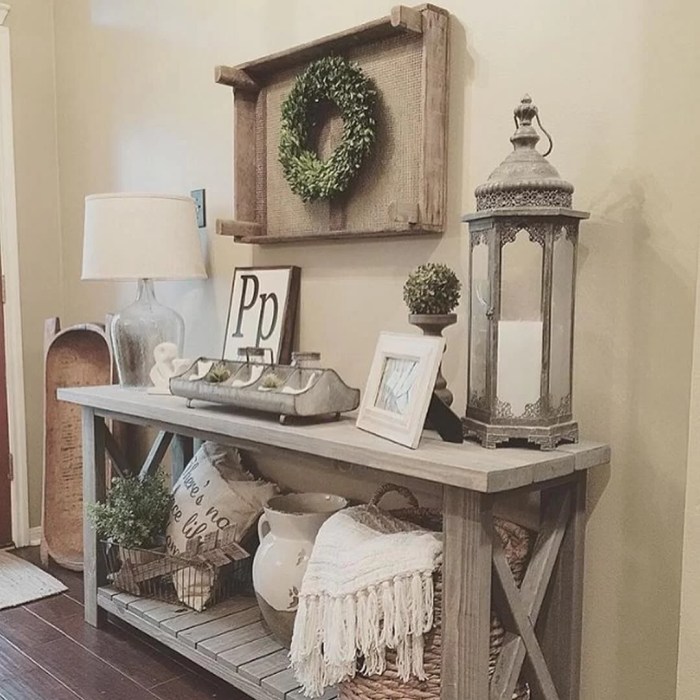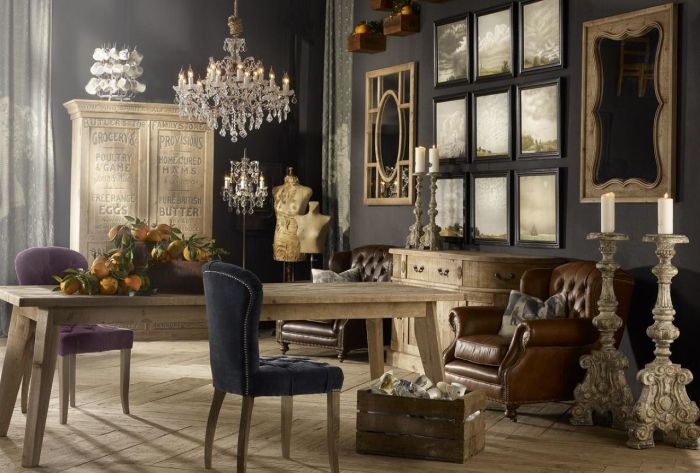How to Design The allure of a coastal home, with its breathtaking ocean views and soothing sea breezes, is undeniable. But designing a residence that harmoniously integrates with this dynamic environment requires a nuanced understanding of architectural principles, structural engineering, and environmental considerations. From selecting the optimal site and navigating complex building codes to choosing durable materials and creating a calming interior, the journey of designing a coastal home is a fascinating blend of art and science.
This guide delves into the key aspects, providing a roadmap for creating a stunning and resilient coastal sanctuary.
Building near the coast presents unique challenges. Salt spray, strong winds, and the ever-present threat of erosion demand careful planning and the selection of materials that can withstand these harsh conditions. Understanding local building codes and regulations is paramount, as these often include stringent requirements to mitigate the risks associated with coastal living. This comprehensive guide will navigate you through each step, from initial site selection and architectural design to interior decor and landscaping, ensuring your coastal dream home is both beautiful and built to last.
Site Selection and Planning
Constructing a coastal home requires meticulous planning, going beyond mere aesthetics. The location’s interaction with natural forces significantly impacts the structure’s longevity and habitability. Understanding these interactions and adhering to regulations is paramount for a successful and safe project.
Site selection for a coastal home involves a careful consideration of several key environmental factors. The interplay of sun exposure, prevailing winds, and the desired views significantly influences the home’s design and functionality, ultimately impacting energy efficiency, comfort, and the overall living experience. Understanding local building codes and regulations, specific to coastal construction, is also critical for ensuring the structure’s resilience against natural hazards such as hurricanes, storm surges, and erosion.
Optimal Site Orientation
The orientation of a coastal home significantly affects its performance. A poorly oriented home can suffer from excessive heat gain in summer, cold drafts in winter, and limited views. Conversely, a well-oriented home can maximize natural light, minimize energy consumption, and offer breathtaking vistas. The following table illustrates the pros and cons of different orientations, assuming a Northern Hemisphere location.
In the Southern Hemisphere, these considerations would be reversed.
| Orientation | Pros | Cons | Considerations |
|---|---|---|---|
| South-facing (Northern Hemisphere) | Maximum solar gain in winter, minimizing heating costs; bright interiors. | High solar gain in summer, potentially increasing cooling costs; potential for overheating. | Consider the use of shading devices (e.g., overhangs, awnings) to mitigate summer heat. |
| East-facing | Morning sun, warming the home gradually; potential for beautiful sunrises. | Afternoon shade; less solar gain compared to south-facing. | Suitable for those who prefer gentler warming and cooler afternoons. |
| West-facing | Afternoon sun, providing warmth later in the day; potential for spectacular sunsets. | High solar gain in the afternoon and evening, potentially increasing cooling costs; risk of overheating. | Similar to south-facing, consider shading devices to manage heat. |
| North-facing (Northern Hemisphere) | Even, consistent light throughout the day; less solar gain, reducing cooling loads. | Minimal direct sunlight, potentially leading to colder interiors in winter; may require more artificial lighting. | Ideal for minimizing solar heat gain but requires careful consideration of insulation and heating systems. |
Coastal Building Codes and Regulations
Coastal regions are often subject to stringent building codes and regulations designed to protect both structures and the environment. These regulations address issues such as wind resistance, flood protection, erosion control, and the preservation of coastal ecosystems. Ignoring these regulations can lead to significant legal consequences, including fines, stop-work orders, and even demolition. Examples of common coastal building code requirements include elevated foundations to withstand flooding, reinforced construction to resist high winds, and the use of specific materials resistant to saltwater corrosion.
Permitting and Approvals
Obtaining the necessary permits and approvals for a coastal home project is a complex process that often involves multiple agencies and jurisdictions. This typically includes submitting detailed plans, conducting environmental impact assessments, and demonstrating compliance with all applicable building codes and regulations. The timeline for obtaining permits can vary significantly depending on the location and the complexity of the project.
Delays are common, and proactive communication with relevant authorities is essential to ensure a smooth and timely process. Failure to secure the proper permits before commencing construction can result in significant delays, additional costs, and legal repercussions.
Architectural Style and Design
The design of a coastal home must harmoniously blend aesthetics with the unique challenges presented by the coastal environment. Salt air, strong winds, and potential flooding necessitate robust construction and materials, while the stunning natural beauty of the coastline inspires architectural choices that celebrate the surrounding landscape. The style chosen significantly impacts the home’s longevity, energy efficiency, and overall aesthetic appeal.
Careful consideration of architectural style, material selection, and sustainable design principles are paramount to creating a coastal home that is both beautiful and resilient.
Coastal Architectural Styles
Several architectural styles are particularly well-suited to coastal environments, each offering unique benefits and aesthetic characteristics. The optimal choice depends on the specific location, climate, and the homeowner’s preferences.
- Cape Cod: Characterized by low-pitched roofs, symmetrical facades, and dormers, Cape Cod style homes are known for their simplicity and practicality. Their sturdy construction and relatively small footprint make them well-suited to coastal areas prone to strong winds. The use of natural wood siding and shingles further enhances their integration with the natural environment.
- Shingle Style: This style emphasizes the use of overlapping shingles, creating a textured and visually appealing exterior. The varied rooflines and asymmetrical designs often incorporate porches and bay windows, adding character and visual interest. Shingle style homes are adaptable to various coastal settings and can withstand harsh weather conditions.
- Craftsman: While not exclusively a coastal style, Craftsman homes can be beautifully adapted to coastal environments. Their emphasis on natural materials like wood and stone, along with exposed beams and low-pitched roofs, creates a rustic yet elegant aesthetic. The integration of wide porches and covered walkways offers protection from the elements.
- Modern Coastal: This contemporary approach prioritizes clean lines, open floor plans, and large windows to maximize natural light and views. The use of sustainable materials and energy-efficient design features is central to this style. Modern coastal homes often incorporate expansive decks or patios to seamlessly connect indoor and outdoor living spaces.
Natural Materials and Sustainable Design
The coastal environment demands a mindful approach to material selection and construction techniques. Sustainable design principles are not merely aesthetic choices; they are crucial for minimizing the home’s environmental impact and ensuring its resilience in the face of coastal challenges.
Using locally sourced, sustainably harvested timber minimizes transportation costs and environmental impact. Reclaimed wood offers a unique character and reduces the demand for newly harvested resources. Durable, weather-resistant materials like fiber cement siding and composite decking are preferable to materials that require frequent replacement or maintenance. Efficient insulation minimizes energy consumption, reducing reliance on fossil fuels and lowering utility bills.
Furthermore, the integration of renewable energy sources, such as solar panels, can further enhance sustainability.
Coastal Home Facade Design
Imagine a two-story coastal home situated on a gently sloping lot overlooking the ocean. The facade features a blend of Craftsman and Modern Coastal styles. The foundation is clad in locally sourced, light grey granite, providing a solid base and a natural contrast to the upper levels.
The first floor is predominantly constructed from wide, horizontally-laid reclaimed cedar planks, stained a warm, weathered grey. This creates a sense of grounded stability and complements the granite foundation. Large, multi-paned windows, framed in dark bronze, are strategically placed to maximize ocean views while minimizing direct sunlight. A wide, covered porch extends across the entire front of the first floor, supported by sturdy, dark brown wooden beams.
The porch floor is made of durable, low-maintenance composite decking in a light grey color, providing a comfortable outdoor living space.
The second floor features cedar shake shingles in a lighter grey tone, providing a textural contrast to the smooth cedar planks below. Large, energy-efficient windows are again incorporated, offering stunning panoramic views. The color palette emphasizes natural tones, creating a sense of harmony with the surrounding environment. The overall texture is a delightful interplay of smooth and rough surfaces, reflecting the natural textures found in the coastal environment.
The design prioritizes natural ventilation and incorporates overhangs to protect the facade from harsh weather.
Interior Design and Decor
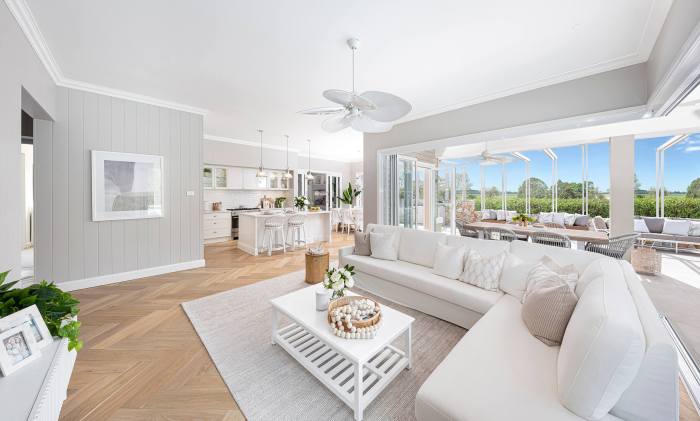
Creating a coastal home interior involves more than just beach-themed decorations; it’s about harnessing the inherent serenity and refreshing qualities of the coastal environment to craft a space that promotes relaxation and well-being. This requires a thoughtful approach to color palettes, textures, furniture selection, and the strategic use of natural light and ventilation. The goal is to evoke the feeling of a gentle sea breeze and sun-drenched shores within the confines of your home.The successful implementation of a coastal interior design hinges on understanding the principles of biophilic design, which integrates natural elements into the built environment to improve occupant well-being.
This approach draws on the scientifically proven positive effects of natural light, ventilation, and natural materials on mood, productivity, and overall health.
Color Palettes and Textures
Coastal color schemes often leverage the calming influence of natural hues. Think soft blues reminiscent of the ocean’s depths, sandy beiges evoking sun-kissed beaches, and crisp whites reflecting the bright sunlight. These colors are often complemented by accents of seafoam green, coral, or muted grays to add visual interest without disrupting the overall sense of tranquility. The textures play a crucial role as well.
Natural materials like woven seagrass rugs, linen fabrics, and driftwood accents introduce a tactile dimension that enhances the sensory experience, creating a feeling of warmth and comfort. The rough texture of a hand-hewn wooden coffee table contrasts beautifully with the smooth surface of a linen sofa, adding depth and visual interest. Consider the psychological impact of texture: rougher textures can be grounding, while smoother ones can promote feelings of calm.
Furniture and Decor Elements
Selecting furniture and decor for a coastal home requires a focus on both aesthetics and practicality. Coastal living often involves exposure to elements like salt air and moisture, so durability is paramount.
- Durable Upholstery: Opt for fabrics like Sunbrella, known for its resistance to fading, mildew, and stains. Consider using outdoor-rated fabrics in high-traffic areas to ensure longevity.
- Natural Materials: Incorporate furniture made from sustainably sourced wood, such as driftwood, pine, or teak, which can withstand the coastal climate. Rattan and wicker are also excellent choices for adding texture and a relaxed feel.
- Lightweight Furniture: Choose furniture that is easy to move and rearrange, allowing for flexibility in adapting the space to different needs and seasons. This is especially helpful in homes prone to seasonal changes.
- Coastal-Inspired Decor: Incorporate elements such as seashells, coral (ensure it’s ethically sourced), nautical-themed artwork, and coastal-inspired textiles. These elements add personality and reinforce the coastal theme without overwhelming the space.
- Practical Storage: Coastal homes often benefit from ample storage solutions to keep things organized and prevent clutter. Built-in shelving, storage ottomans, and chests are all excellent options.
Incorporating Natural Light and Ventilation
Natural light and ventilation are paramount in creating a spacious and airy coastal home. Studies have shown that exposure to natural light improves mood and sleep quality, while adequate ventilation enhances air quality and reduces the risk of mold and mildew, common issues in coastal environments.Maximizing natural light can be achieved through strategically placed windows and skylights. Large windows that frame ocean views or allow ample light into the living spaces create a sense of openness and connection with the outdoors.
Light-colored walls and flooring reflect light, further enhancing the feeling of spaciousness. Ventilation can be improved through the use of cross-ventilation techniques, ensuring air flows freely through the house. Consider installing energy-efficient windows and doors that can be easily opened to facilitate natural airflow. Ceiling fans can further aid in circulating air and creating a comfortable indoor climate.
Strategically placed windows can also reduce the need for artificial lighting, promoting energy efficiency and reducing the carbon footprint of the home. This aligns with sustainable design principles that are increasingly important in coastal regions vulnerable to climate change.
Structural Considerations and Materials
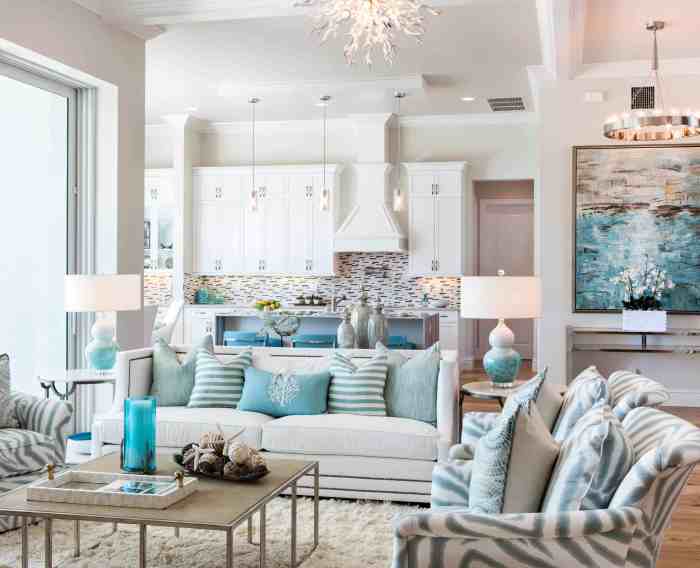
Constructing a coastal home requires careful consideration of the unique challenges posed by the marine environment. Salt spray, strong winds, and potential flooding necessitate the selection of durable materials and robust structural designs capable of withstanding these harsh conditions. Ignoring these factors can lead to costly repairs and compromised safety. This section details suitable materials and crucial structural elements for ensuring longevity and resilience in a coastal dwelling.
Suitable Building Materials for Coastal Homes
The selection of building materials is paramount in coastal construction. Materials must exhibit high resistance to corrosion from salt spray, the abrasive action of wind-driven sand, and the potential for water damage. The following table compares the performance of several common building materials, considering durability, cost, and maintenance requirements.
| Material | Durability | Cost | Maintenance |
|---|---|---|---|
| Pressure-treated lumber | Moderate; susceptible to rot and insect damage if not properly treated. Life expectancy can vary significantly based on treatment and exposure. | Low to moderate | Regular inspection and potential re-treatment every few years. |
| Concrete | High; resistant to salt spray and wind damage. Proper mixing and curing are essential for optimal performance. | Moderate to high | Relatively low; occasional cleaning and sealing may be necessary. |
| Fiber cement siding | High; resistant to rot, insects, and fire. Can withstand harsh weather conditions. | Moderate to high | Low; typically requires only periodic cleaning. |
| Brick | Very high; exceptionally durable and resistant to the elements. Provides excellent insulation. | High | Low; minimal maintenance required beyond occasional cleaning. |
Foundation Design and Drainage Systems
Proper foundation design and effective drainage are critical for mitigating the risks of erosion and flooding in coastal areas. Foundations must be deep enough to anchor the structure firmly and resist the forces of wind and waves. Drainage systems, including gutters, downspouts, and strategically placed French drains, are crucial for diverting rainwater away from the foundation, preventing water accumulation and soil erosion.
A poorly designed foundation can lead to structural instability and costly repairs, while inadequate drainage can result in basement flooding and foundation damage. For instance, a home built on a poorly compacted sandy foundation near the coast is highly susceptible to settling and damage from storm surges. In contrast, a home with a deep, reinforced concrete foundation and a well-designed drainage system can withstand these forces far more effectively.
Protection from Storm Damage
Coastal homes face significant risks from storms, including high winds, heavy rainfall, and storm surges. Mitigation strategies are essential to minimize damage and protect the occupants. Impact-resistant windows, made of laminated glass or polycarbonate, can significantly reduce the risk of breakage during high winds or hail. Reinforced structural elements, such as hurricane straps and shear walls, increase the building’s resistance to wind uplift and lateral forces.
Elevated foundations can help protect the home from flooding. Properly designed roof systems, including reinforced trusses and appropriate slope, are also critical to preventing damage from wind and heavy rain. Consideration should also be given to building materials and their resistance to wind and water damage. For example, the use of impact-resistant roofing materials, such as metal roofing, offers superior protection compared to traditional asphalt shingles.
Landscaping and Exterior Features
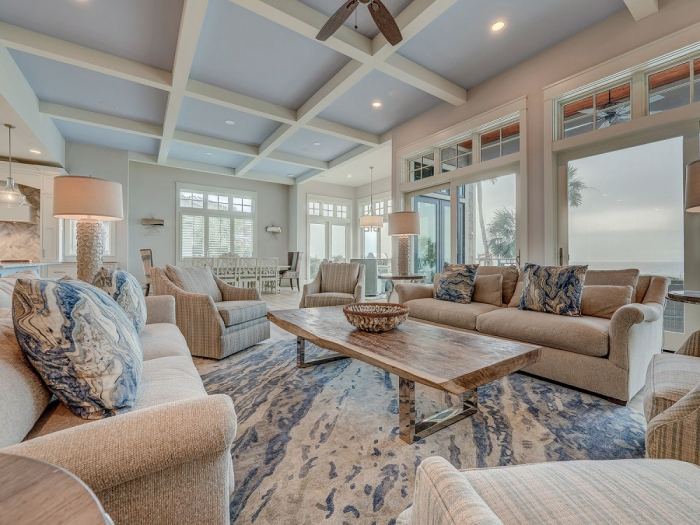
Careful landscaping and exterior design are crucial for a coastal home, enhancing both its aesthetic appeal and its resilience against the harsh maritime environment. The selection of plant life must consider salt spray tolerance, wind resistance, and the specific microclimate of the site. Similarly, outdoor living spaces should be designed to maximize comfort and enjoyment while minimizing maintenance and environmental impact.
The integration of sustainable practices and locally sourced materials is paramount.
Coastal Plant Selection for a Sustainable Landscape
The success of coastal landscaping hinges on choosing plants adapted to the unique challenges of the seaside environment. Salt spray, strong winds, and sandy soil necessitate a careful selection process. Prioritizing native species not only enhances biodiversity but also minimizes the need for excessive watering and fertilization, promoting a sustainable and resilient landscape.
- Sea Oats (Uniola paniculata): This native grass forms dense, wind-resistant clumps, stabilizing dunes and providing a natural barrier against erosion. Its feathery seed heads add a beautiful, textured element to the landscape, swaying gently in the coastal breeze. Sea oats are highly tolerant of salt spray and sandy soil, requiring minimal maintenance once established.
- Beach Sunflower (Helianthus debilis): A vibrant yellow flower that thrives in full sun and sandy soil. Its drought tolerance makes it ideal for coastal gardens, and its ability to attract pollinators contributes to a healthy ecosystem. The beach sunflower is a resilient plant, easily adapting to the harsh coastal conditions.
- Dune Rosemary (Westringia fruticosa): A low-growing, drought-tolerant shrub with silvery-grey foliage and small, lavender-blue flowers. Its compact form makes it ideal for creating low hedges or ground cover, preventing erosion and providing a visual contrast to other plants. Dune rosemary is exceptionally hardy and requires minimal watering.
Patio Design for Outdoor Coastal Living
A well-designed patio or deck extends the living space outwards, creating a seamless transition between indoors and outdoors. The choice of materials should reflect the coastal aesthetic while considering durability and maintenance. Optimizing sun exposure and privacy are key factors to ensure comfortable and enjoyable outdoor living.The proposed patio will be constructed from locally sourced, sustainably harvested ipe wood.
Ipe is known for its exceptional durability, resistance to rot and insects, and rich, warm color. The layout will incorporate a combination of open and shaded areas, with a pergola providing shade during the hottest parts of the day. The pergola will be designed to maximize views of the ocean while providing privacy from neighboring properties. The patio will be positioned to capture prevailing breezes and offer ample space for dining, lounging, and entertaining.
Integrated lighting will enhance the ambiance and safety at night.
Outdoor Lighting and Safety Features
Strategic outdoor lighting is essential for both safety and aesthetics. It enhances the curb appeal of the coastal home at night, while also providing illumination for pathways and steps, preventing accidents. The choice of fixtures should be weather-resistant and energy-efficient, minimizing environmental impact.The design will incorporate low-voltage landscape lighting, strategically placed to highlight key features of the landscape, such as pathways, trees, and architectural details.
Motion-sensor lights will be installed near entrances and other vulnerable areas to deter intruders and provide additional safety. Warm-toned LED lighting will create a welcoming and inviting ambiance, enhancing the overall aesthetic appeal of the home. The use of solar-powered lighting will further reduce the environmental footprint of the design.
Designing a coastal home is a multifaceted endeavor, demanding careful consideration of numerous factors. From the initial site assessment and meticulous planning to the selection of resilient materials and the creation of a harmonious interior, each decision contributes to the overall success of the project. By understanding the interplay between architectural design, structural integrity, and environmental considerations, one can create a breathtaking coastal residence that stands as a testament to both aesthetic beauty and enduring resilience against the forces of nature.
This guide has provided a framework for this process; the ultimate result will be a unique reflection of the homeowner’s vision and a testament to thoughtful design in a challenging yet rewarding environment.
General Inquiries
What are some common coastal home design mistakes to avoid?
Ignoring the impact of salt air on materials (leading to corrosion), neglecting proper drainage to prevent flooding, and overlooking the need for hurricane-resistant features are frequent mistakes.
How can I minimize the environmental impact of my coastal home?
Incorporate sustainable materials, utilize passive solar design for energy efficiency, employ water-saving fixtures, and choose native landscaping to reduce water consumption and support local ecosystems.
What insurance considerations are specific to coastal homes?
Coastal properties often require specialized flood and windstorm insurance, with premiums significantly higher than inland homes due to increased risk. Thorough research and comparison of insurance providers are crucial.
How can I ensure my coastal home is energy-efficient?
Employ high-performance windows and insulation, consider solar power, and utilize energy-efficient appliances and lighting. Proper ventilation can also reduce reliance on air conditioning.
What are the long-term maintenance considerations for a coastal home?
Regular inspections for structural damage, prompt repairs to address salt damage, and scheduled maintenance of exterior finishes are essential to preserve the home’s longevity in a harsh coastal environment.
Read More: Kanavino.org
